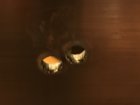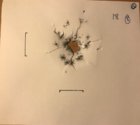AllThingsAI
Silver $$ Contributor
I started a new thread to keep the results clean from the original post, i think they are getting lost.
Original thread here:
http://forum.accurateshooter.com/th...ty-vs-bullet-rpm-which-“hits”-harder.4011523/
Test:
.224 40g Vmax (Shot from .223's)
Velocity ~ 3300fps
1:12 and 1:8 Twist Barrels:
Expansion Media 1/8" Aluminum Plate
Here are the images of layers 1, 5, and 8. Each layer is 1/2" apart. So distance from layer 1 to 5 is 2". Distance from 5 to 8 is 1.5" Layer 1 was 1" from 1/8" thick aluminum plate. There are two pics. First is the front of layers 1,5,8, the second is the back layers 1,5,8. The distance markers on each card is 1" for measurement reference.


My Observations:
1. N=1 More testing is needed
2. I am able to track individual bullet fragments through the layers (will calculate spread average)
3. Overall fragmentation pattern diameter is approx. the same for both twists
4. Fragmentation for 1:8 twist, much larger pieces of bullet are distributed more evenly. Much darker color impacts (from lead core?) with larger holes
5. Fragmentation from 1:12 was patterned mostly to one side with very thin, slice like holes (to me this appears to be the jacket fragments. Much smaller impact holes with much lighter impact color (less of the core actually fragmenting?)
My conclusions from first test:
1. More testing needed (hard to draw conclusions from one test)
2. Overall diameter of fragmentation pattern is aprox. the same between two twists
3. 1:8 twist produced greater bullet fragmentation of the bullet core (heavier pieces dist. evenly)
4. 1:12 twist bullet did not fragment as completely (smaller bullet fragments creating small slices)
5. 1:8 first layer detection shows larger darker striations with bigger holes outside of main hole
6. First layer main hole is about the same size for both twists
Original thread here:
http://forum.accurateshooter.com/th...ty-vs-bullet-rpm-which-“hits”-harder.4011523/
Test:
.224 40g Vmax (Shot from .223's)
Velocity ~ 3300fps
1:12 and 1:8 Twist Barrels:
Expansion Media 1/8" Aluminum Plate
Here are the images of layers 1, 5, and 8. Each layer is 1/2" apart. So distance from layer 1 to 5 is 2". Distance from 5 to 8 is 1.5" Layer 1 was 1" from 1/8" thick aluminum plate. There are two pics. First is the front of layers 1,5,8, the second is the back layers 1,5,8. The distance markers on each card is 1" for measurement reference.
My Observations:
1. N=1 More testing is needed
2. I am able to track individual bullet fragments through the layers (will calculate spread average)
3. Overall fragmentation pattern diameter is approx. the same for both twists
4. Fragmentation for 1:8 twist, much larger pieces of bullet are distributed more evenly. Much darker color impacts (from lead core?) with larger holes
5. Fragmentation from 1:12 was patterned mostly to one side with very thin, slice like holes (to me this appears to be the jacket fragments. Much smaller impact holes with much lighter impact color (less of the core actually fragmenting?)
My conclusions from first test:
1. More testing needed (hard to draw conclusions from one test)
2. Overall diameter of fragmentation pattern is aprox. the same between two twists
3. 1:8 twist produced greater bullet fragmentation of the bullet core (heavier pieces dist. evenly)
4. 1:12 twist bullet did not fragment as completely (smaller bullet fragments creating small slices)
5. 1:8 first layer detection shows larger darker striations with bigger holes outside of main hole
6. First layer main hole is about the same size for both twists
Last edited:













